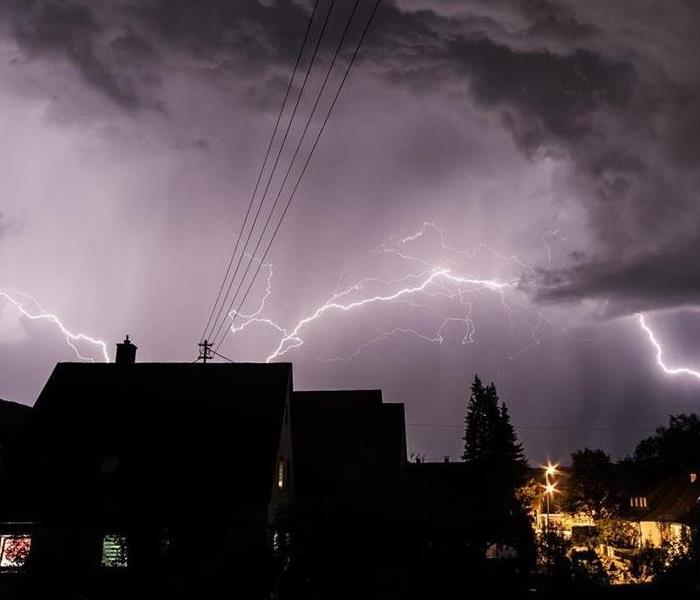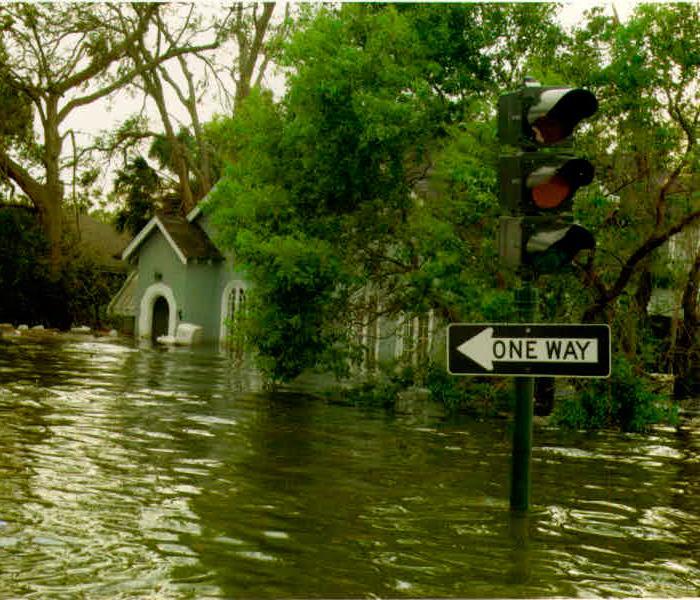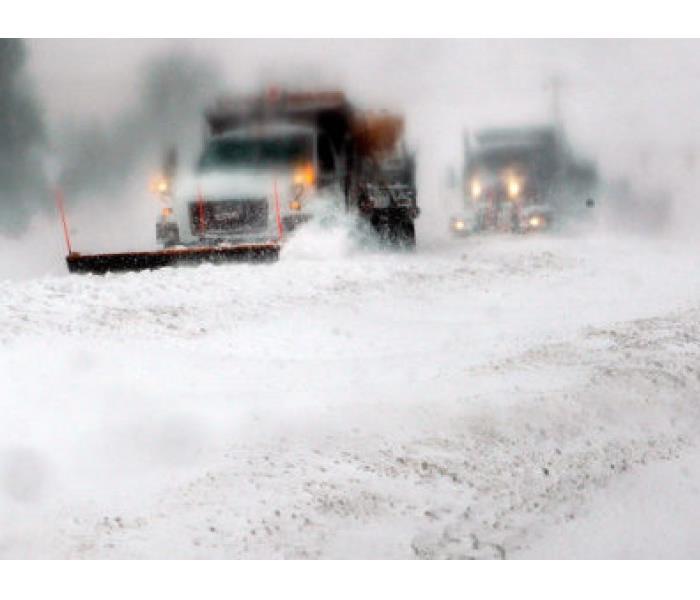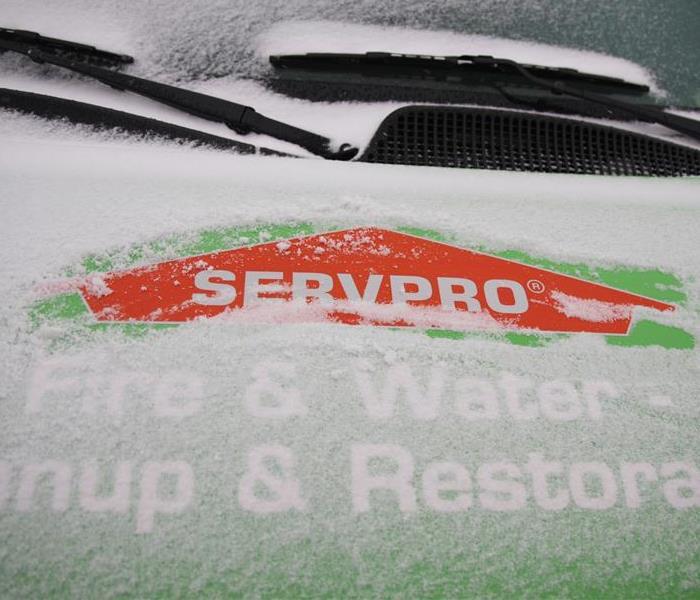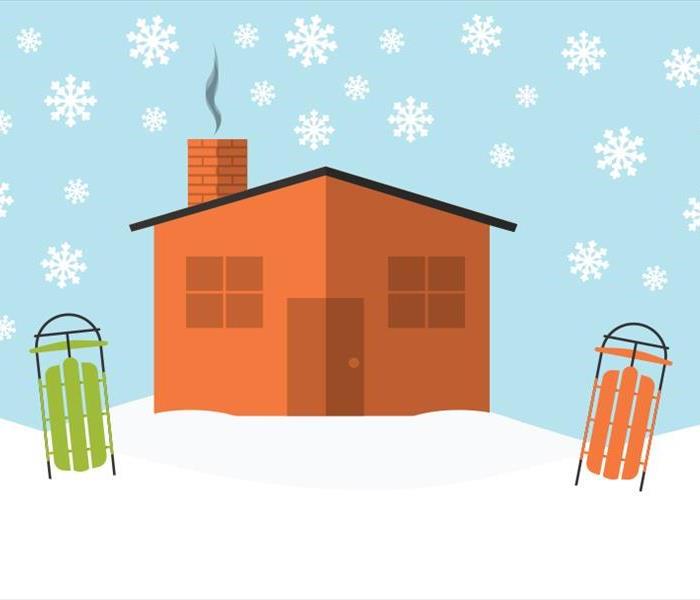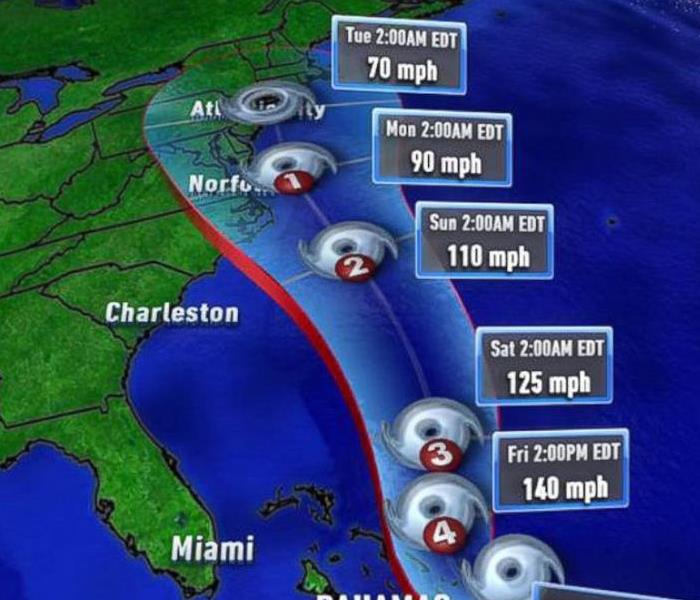Recent Storm Damage Posts
Hurricane Season Is Upon Us
9/17/2024 (Permalink)
It is that time of the year again – the dreaded hurricane season. Do you know what you need to be prepared? Hurricanes can pose a serious threat to you, your family and property. These natural disasters produce winds ranging from 74 to 200 miles per hour. A storm with that much power can cause catastrophic damage and severe flooding. If your home or business sustains high winds or heavy rain the damage can be devastating. When the weather hits, you will want to be prepared ahead of time. Don’t wait until the storm hits to get your supplies together. Start now, so you can stay safe later.
Here’s a list of basic emergency supplies to have on hand:
- Flashlights and extra batteries
- Portable battery-operated radio and extra batteries
- Essential medicines and supplies
If a storm or hurricane causes water or structural damage to your home or business, know that SERVPRO of Edgewater/Deale-Churchton/Lothian is just a phone call away. Call 410-867-3590 today!
Hurricane Ian on the Way! What to do in the Event of Disaster
9/27/2022 (Permalink)
Who remembers around this time last year when that pair of tornadoes rolled through southern Anne Arundel County causing devastating damage to homes, businesses and facilities in Annapolis and Edgewater? From uprooted trees to fallen power lines, plenty of damage was dealt. Immediately following this storm surge, our emergency response team was responding to calls and helping the community restore their homes. This year, Hurricane Ian is on its way so in response to the possibility of severe weather, we want to share some things homeowners can do in the event of property damage.
- Remove dead branches from trees and remove dead trees shortly after the storm. Dead trees and tree branches can fall on cars and damage your roof.
- Dirty or cluttered gutters are a common cause of drainage problems. However, drainage problems can also occur with patios and landscaping too. If you see puddles forming in your yard or on your driveway, this can be a sign of drainage problems. To better avoid water damage, get those drainage problems addressed before a storm strikes.
- When was the last time you had your roof inspected? Ideally, your roof should be inspected and maintained on a yearly basis. Leaks in your roof can result in several levels of your home being affected.
- Ensure you have a sump pump battery backup in place. These batteries can save you from having a real mess on your hands. A backup battery system is needed most often when heavy rains have resulted in a power outage, or the primary sump pump is overwhelmed by heavy water volumes during a rain event.
- Know where your shut off valves are for your utilities. If you have a flood, for your safety, it is important to know where the shut off valves are locating both inside/outside your home.
When the weather strikes, we strike back harder. Call SERVPRO of Edgewater/Deale-Churchton/Lothian if your home or business is in need of water damage restoration services!
Hurricane Season Is Upon Us
8/24/2022 (Permalink)
It is that time of the year again - the dreaded hurricane season. Do you know what you need to do to be prepared? Hurricanes can pose a serious threat to both your life and property. These natural disasters produce winds ranging from 74 to 200 miles per hour. A storm with that much power can cause catastrophic damage and severe flooding. If your home or business sustains high winds or heavy rain you may need to survive on your own for several days. Don’t wait until the storm hits to get your supplies together. Start now so you can stay safe.
Here’s a list of basic emergency supplies to have on hand:
- Flashlights and extra batteries
- Portable battery-operated radio and extra batteries
- First aid kit
- Emergency food and water
- Non-electric can opener
- Essential medicines and supplies
If a storm or hurricane causes water or structural damage to your home or business, SERVPRO of Edgewater/Deale-Churchton/Lothian is just a phone call away.
Flood Season!
6/30/2022 (Permalink)
Did you know that Edgewater is susceptible to flood damage? If you have lived in Edgewater for quite some time, you are probably well aware of this. Flood prone zones can cause severe damage to homes and businesses in the area. Whether the flood comes from a flash flood, natural flood, major river or tropical storm, the damage can be extensive. In order to stay safe from flood hazards, SERVPRO of Edgewater/Deale-Churchton/Lothian has some tips for you to follow for before and after a flood occurs.
Before a flood
- Make sure your insurance policy covers flooding. Even renters are eligible for flood insurance.
- Move furniture and valuables to higher floors as floodwater rises.
- Keep the car gas tank filled in case you need to evacuate.
- Stay informed about weather conditions.... flash flooding can occur in only minutes!
Do not drive through flooded roadways. The road may not be there. Follow the instructions given by emergency officials. If told to evacuate, do so!
After a flood
- Do not eat or drink anything that encounters flood water.
- Follow emergency officials' instructions on safe water consumption. You may have to boil your water.
- Clean and have electrical equipment checked before using.
- Report broken utilities to the proper authorities.
- Use flashlights, not an open flame like a candle. Candles are a fire hazard and could cause an explosion if they encounter flammable gases.
- Watch out for snakes and other "stray" animals. Water will cause snakes to come out of the ground with nowhere to go. Many other animals may be abandoned and lost.
- Remember, floodwaters sometimes take days to rise, even when the sun is shining. It can take days for floodwaters to make their way downstream. Do not underestimate the power and speed at which flood water can rise and destroy everything in its path.
If a flood occurs in the Edgewater area and affects your home or business, call our PROs here at SERVPRO of Edgewater/Deale-Churchton/Lothian and we can make it “Like it never even happened.”
4 Things You Can Do in the Event of a Power Outage
6/14/2022 (Permalink)
Throughout the summer, Anne Arundel County sees massive thunderstorms roll through. The warm air, the rolling sound of the thunder in the background and the streaks of lightning light up the night sky is like nature's version of fireworks. However, with every thunderstorm, there is the probability of a power outage. Here are 4 things SERVPRO of Edgewater/Deale-Churchton/Lothian recommends in the event of a power outage:
Be Prepared. The best way to ensure business continuity is by being prepared. SERVPRO of Edgewater/Deale-Churchton/Lothian can help you develop an Emergency Readiness Plan (ERP).
Install Surge Protectors. Install a plug-in, point-of-use electrical surge protector. You plug this device into a grounded electrical outlet and plug your appliances and computers into the surge protector.
Battery Backups. If your property has a sump pump in the basement or crawl space, make sure the sump pump has a battery backup. Battery backups are also important for network servers.
Contact Utility Company. When your office or home loses power, be sure to contact BGE, which provides power to most of Anne Arundel County, Maryland. Visit www.bge.com or call to report outages at 877-778-2222. If you see sparking power lines, immediately call 9-1-1.
Normally, a short power outage is no big deal, but the longer the power is out the potential for damage to a home or business increases.
Be Winter Ready!
1/10/2022 (Permalink)
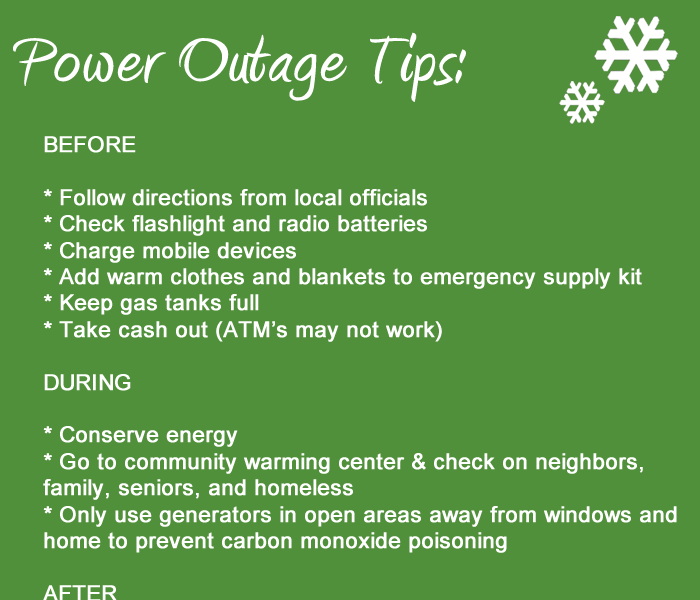 Here are some steps you can take to prepare for a power outage.
Here are some steps you can take to prepare for a power outage.
Freezing temperatures are already upon us. And with freezing temperatures, comes frozen sprinkler pipes. We all know how unpredictable Maryland weather can be; we saw it happen last week with 60 degrees one day and 10 inches of snow the next. So that begs the question, are you and your home winter ready?
If not, SERVPRO of Edgewater/Deale-Churchton/Lothian has you covered. Did you know a sprinkler pipe at a typical flow fate of 30 gallons per minute can expel as much as 500 gallons of water in 15 minutes? In just 15 minutes, flowing water can cause serious damage to your home.
Here are a few tips to consider for your family:
- Make a family communications plan and evacuation plan for the winter months
- Travel safely and smartly, being well-rested and well-prepared during daylight hours
- Consistently monitor the weather, especially when planning a big event
- Keep safe heaters on a single electrical cord, at least three feet away from flammable objects
- Turn off your outdoor water supply and ensure your sump pump is running properly
If you have any problems this winter, call SERVPRO of Edgewater/Deale-Churchton/Lothian and we will send our certified professionals to make any size disaster “Like it never even happened.”
Choosing the Right Generator
12/14/2021 (Permalink)
Do you have EVERYTHING you need to be fully prepared for winter this year? From severe winds to snowfall and freezing rain and everything in between, it can be extremely difficult to prepare for every disaster. One thing you should invest in for your home, if you have not already, is a backup generator in case of a power outage. Here are a few tips our crew at SERVPRO has before choosing the right generator:
- Add up the power requirements of the appliances and devices you will want to use. (Check the back and sides for a label with this info.)
- Add up the wattage of all the light bulbs you will want to use.
- Find the total amps you need by dividing watts by volts.
- Choose a generator that produces more amps than you need – because some machines draw up to 3 times as much power when starting up, and others lose efficiency over time.
The best option is a permanently installed stationary generator. But this might not always be possible for families in Anne Arundel County. If your power needs are more complicated or you are having a challenging time deciding what to do, try reaching out to a certified electrician to assist you.
If you experience any type of winter weather or storm damage loss to your home or business, call SERVPRO of Edgewater and our crew will restore your home to preloss condition!
The Season of Tropical Storms
9/28/2021 (Permalink)
Were you or someone you know affected by one of the many storms that affected our area this month? Were parts of your home damaged or destroyed by the severe storms? According to the National Weather service, the sort of damage observed in Edgewater wiith some roofs torn from homes and power lines topped over, can require wind speeds from 100 to 140 mph.
SERVPRO of Edgewater/Deale-Churchton/Lothian specializes in storm and flood damage restoration. Whether you have minor or major damage to your home because of the storm, SERVPRO professionals who can help. Our highly trained crews use specialized equipment to restore your property to its pre-storm condition.
Being locally owned and operated, our teams can respond faster to your problems and with the right resources. The SERVPRO system is designed to handle any size disaster and help make it “Like it never even happened.” Call us for assistance 410-923-6166
Hurricane Season Is Coming
8/24/2021 (Permalink)
Its hurricane season again. Do you know what to do to be prepared? Hurricanes can pose a serious threat to both your life and property. These natural disasters produce winds ranging from 74 to 200 miles per hour. A storm with that much power can cause catastrophic damage and severe flooding. If your home or business sustains high winds or heavy rain you may need to survive on your own for several days. Don’t wait until the storm hits to get your supplies together. Start now so you can stay safe.
Here’s a list of basic emergency supplies to have on hand:
If a storm does cause water or structural damage to your property, SERVPRO of
Edgewater/Deale-Churchton/Lothian is just a phone call away. #here2help.
Heavy Rain Has Stopped For Now
7/1/2021 (Permalink)
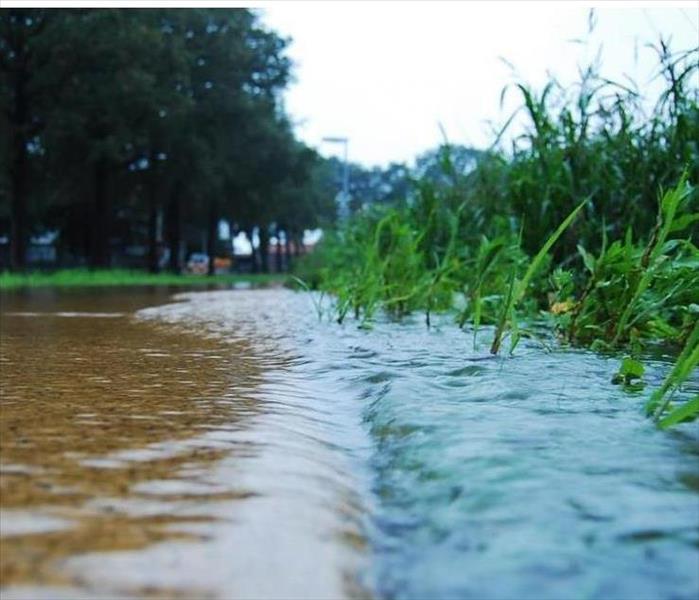 Flooded Street
Flooded Street
The heavy rains have stopped for now but more are forecasted, and ground water levels are high. There is no time to waste when your home is affected, a fast response is a critical factor in reducing damage and restoring water damaged materials. Your local SERVPRO franchise will help you clean up your water damage in your Chesapeake Beach home. Upon arrival we will do a damage assessment and evaluation to determine the best path of action to remove the water and dry out your property fast. The damaged area is inspected with water sensing equipment such as probes and other infrared tools in order to determine the extent of areas affected and calculate the amount of drying equipment needed.
In addition to cleaning up fire and water damages, SERVPRO franchise pros can get your home put back together afterwards. Keep us in mind for your reconstruction needs. Call SERVPRO of Edgewater/Deale-Churchton/Lothian if you need help cleaning up after this round of storms - 410-923- 6168- #Here2Help
Storm Water in Edgewater
6/15/2021 (Permalink)
SERVPRO of Edgewater/Deale-Churchton/Lothian knows how to get you back to normal quickly when you have flood or storm water in your Edgewater home.
There are many potential issues left behind after flood water enters and damages your home. Once the water enters, the damage begins almost immediately and compounds from there. Flood water is never clean and often has toxins, sludge, and sewage in it causing damage to everything it touches.
These conditions require the expertise of a certified and trained technician who knows what can be salvaged and cleaned and what has to be removed for the safety of your family. It’s important that your home is dried properly and thoroughly to prevent long term damage.
We here at SERVPRO of Edgewater/Deale-Churchton/Lothian can provide you with this help. Don’t let a flood in your Pasadena property get you down! We will be there to help 24 hours a day 7 days a week.
Dangers of Extreme Cold
1/7/2021 (Permalink)
 Extreme Cold
Extreme Cold
While your Edgewater home may get damaged by winter weather and extreme cold, your personal health is also at risk.
Winter storms create a higher risk of accidents, hypothermia, frostbite, carbon monoxide poisoning, as well as heart attacks from overexertion, according to Ready.gov. That is why it’s important to be aware of the effect extremely cold temperatures can have on you.
Frostbite can occur while your skin is exposed to extremely cold temperatures. Physical symptoms include white or grayish-yellow skin, skin that feels unusually firm or waxy, and numbness.
Hypothermia is when your body temperature falls to an abnormally low temperature caused from long exposure to cold weather. Signs of hypothermia include shivering, exhaustion, confusion, fumbling hands, memory loss, slurred speech, and drowsiness. If someone’s body temperature is below 95°F, seek medical attention immediately.
To avoid these conditions, stay indoors, if possible. If not, dress in layers to stay warm and keep dry.
Can My Belongings Be Cleaned Instead of Replaced?
12/14/2020 (Permalink)
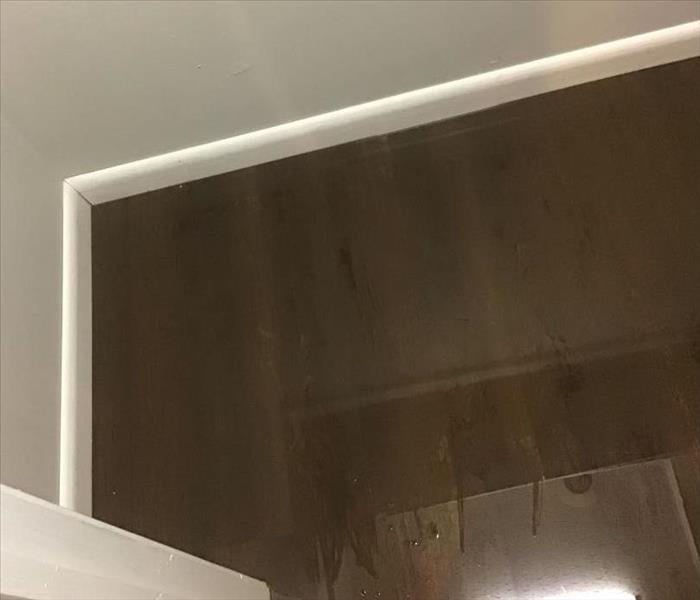 Wet Closet Floor
Wet Closet Floor
SERVPRO of Edgewater/Deale-Churchton/Lothian works with business owners and homeowners when disaster strikes. If there is a storm, a basement may flood. We strive to clean your items instead of replace.
SERVPRO of Edgewater/Deale-Churchton/Lothian specializes in restoring contents damaged by storms. Our expertise and our “restore” versus “replace” mentality can help you save money while preserving precious keepsakes that can’t be replaced. Our IICRC technicians pretest your contents to determine what items can be restored back to their condition before the water damage. We utilize several methods of cleaning your contents, including:
- Dry Cleaning - Used for cleaning light residues
- Wet Cleaning - An effective cleaning method for removing moderate to heavy residues.
- Spray and Wipe -Effective for items that can’t withstand cleaning.
- Abrasive Cleaning - Involves agitation of the surface being cleaned.
- Immersion Cleaning - Contents are dipped into a bath of the cleaning product.
There's no such thing as a small disaster. Storms can hit at any time. Trust SERVPRO of Edgewater/Deale-Churchton/Lothian, because we are open 24 hours a day 365 days a year. We are faster to any size disaster.
Where is all This Rain Coming From?
9/14/2020 (Permalink)
 Rain
Rain
Hurricanes and tropical storms can dump between 6 and 12 inches of rain during a single storm. On average, Maryland sees about 44 inches of rain every year. Lately, Anne Arundel County has seen tremendous rainfall.
Scientists believe that Maryland is experiencing so much rainfall for several reasons including rising sea levels and extreme heat. So far in 2020 the area has seen tropical storms, severe thunderstorms, and even a tornado. Scientists predict the number of storms during hurricane season are also increasing.
September is National Preparedness Month. It’s important to prepare long before a rain and flooding disaster occurs. Sign up for local alerts from Anne Arundel County. Develop and test emergency communications plans. Collect and safeguard critical documents. Document property and assets and make sure you have enough business insurance.
Lastly, store SERVPRO of Edgewater/Deal-Churchton/Lothian in your contact list. Our team is available 24/7 and always ready for whatever happens.
How to Avoid a Flash Flood?
8/24/2020 (Permalink)
 Flash Flood
Flash Flood
Edgewater, Maryland is in the middle of Hurricane Season 2020 and the National Weather Service predicts we will have an extremely active season. One hazard Anne Arundel County often sees is flash floods.
Flooding from heavy rains is the second leading cause of fatalities from landfalling tropical cyclones. Widespread torrential rains associated with these storms often cause flooding hundreds of miles inland. This flooding can persist for several days after a storm has dissipated.
Flash floods are the most dangerous kind of floods, because they combine the destructive power of a flood with incredible speed. Flash floods occur when heavy rainfall exceeds the ability of the ground to absorb it.
If your area is under a Flash Flood Warning or a Flood Warning, you need to take action. This means a flash flood is imminent or occurring. If you are in a flood prone area move immediately to high ground.
Water moving at 9 feet per second is a common speed for flash floods. At this speed, water can move rocks weighing almost a hundred pounds. Flash floods carry debris that elevate their potential to damage structures and injure people.Most fatalities in the US from flash flooding are from vehicles driving into flooded roadways.
Turn around, don’t drown!
Are You Prepared?
7/30/2020 (Permalink)
 2020 Hurricane Names List
2020 Hurricane Names List
We are in the middle of the Atlantic Hurricane Season, are you prepared? Is your property prepared?
Anne Arundel County provides a step-by-step guide to help you get prepared. Click here to access the guide.
The Anne Arundel County Office of Emergency Management has published it’s Hurricane Outlook for 2020. Click here to access their predictions.
Ever wonder how hurricanes get their names? Meteorologists long ago learned that naming tropical storms and hurricanes helps people remember the storms, communicate about them more effectively, and so stay safer if and when a particular storm strikes a coast. These experts assign names to hurricanes according to a formal list of names that is approved before the start of each hurricane season. Click here to learn more.
The Atlantic Hurricane names list for 2020 is as follows:
Arthur
Bertha
Cristobal
Dolly
Edouard
Fay
Gonzalo
Hanna
Isaias
Josephine
Kyle
Laura
Marco
Nana
Omar
Paulette
Rene
Sally
Teddy
Vicky
Wilfred
At SERVPRO of Edgewater/Deale-Churchton/Lothian, we recommend you pay attention to the weather and should the unexpected water intrusion happen, we want you to keep the following in mind:
- Remove excess water by mopping and blotting.
- Wipe excess water from wood furniture after removal of lamps and tabletop items.
- Remove and prop wet upholstery and cushions.
- Place aluminum foil or wood blocks between furniture legs and wet carpeting.
- Turn air conditioning on for maximum drying in summer.
- Remove colored rugs from wet carpeting.
- Remove art objects to a safe, dry place.
- Gather loose items from floors.
Click here for more information on keeping your property safe when you have water damage.
Eliminating the Harmful Microbes and Odor from Flood Damage
6/15/2020 (Permalink)
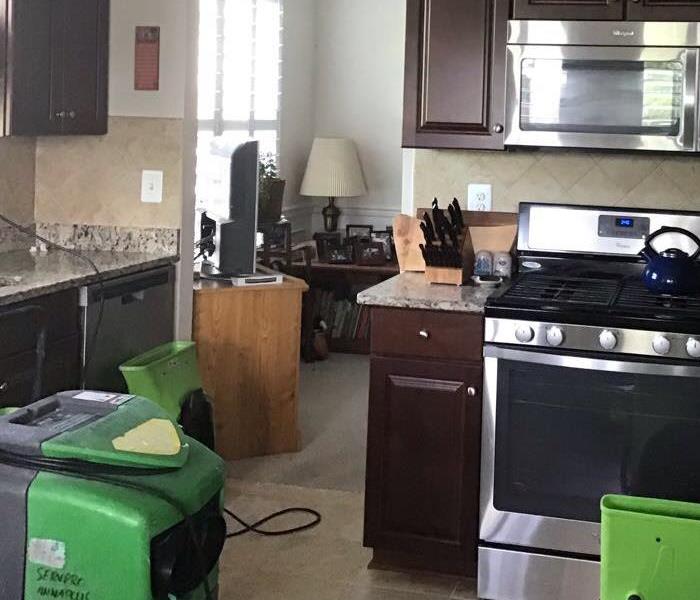 Storm Water Damage
Storm Water Damage
SERVPRO of Edgewater/Deale-Churchton/Lothian knows how to get you back to normal in no time when you have flood/storm water in your Edgewater home. Don’t let a flood in your Edgewater property get you down! We will be there to help 24 hours a day 7 days a week.
There are many potential issues left behind after flood water enters and damages your home. Once the water enters, the damage begins almost immediately and compounds from there. Flood water is never clean and often has toxins, sludge, and sewage.
SERVPRO of Edgewater/Deale-Churchton/Lothian technicians understand the importance of testing the Edgewater, Maryland flood waters. The tests will point them in the right direction so they can properly apply chemical treatments to neutralize different types of bacteria and microbes correctly. We use moisture meters to detect moisture in materials.
Moisture Supports Microbial Growth
The removal of moisture is crucial in stopping the spread and growth of harmful bacteria and microbes. Mold spores germinate quickly, and colonies spread unless dealt with swiftly. Because the technicians hold IICRC certifications, they know the early warning signs. Technicians use a combination of extraction and dehumidification to remove moist air and replace it with warm, dry air. The use of air movers works to pull moisture up and out of walls and flooring and used in tandem with dehumidifiers.
When flood damage is the problem in your home, contact SERVPRO of Edgewater/Deale-Churchton/Lothian as soon as possible. The technicians will arrive quickly and clean up the mess along with offering their reconstruction services.
SERVPRO of Edgewater/Deale-Churchton/Lothian will make the incident "Like it never even happened."
Winter Safety Driving Tips
1/10/2020 (Permalink)
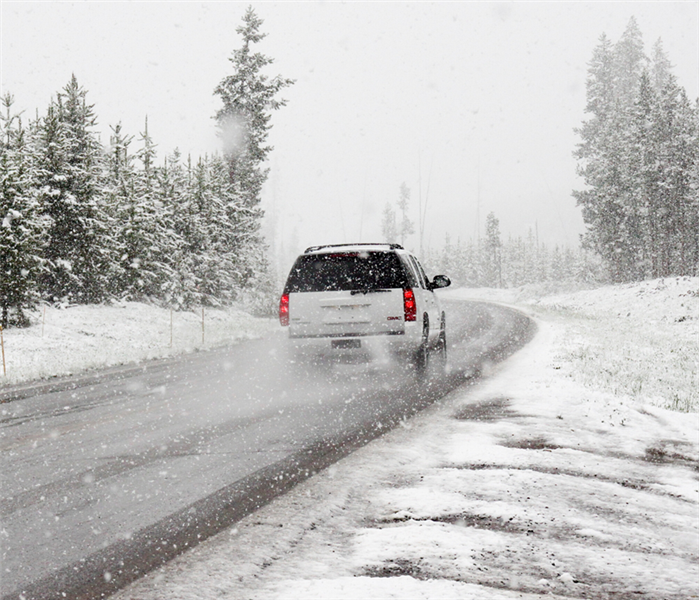 Drive Safely
Drive Safely
Weather conditions in Maryland change quickly during the winter months. SERVPRO of Edgewater/Deale-Churchton/Lothian wants to make sure you are safe while driving during a winter storm. Here are a few tips to keep in mind:
You Snooze you Lose. Don’t hit the snooze button — give yourself extra time when weather is bad. Drivers who give themselves extra time to get to their destination help ensure a safe and appropriate speed for road conditions, and an adequate following distance.
Sharing the Road with School Buses. In all 50 states, it’s illegal to pass a school bus that has its stop arm out and red flashing lights on. It’s estimated that 70,000 drivers break this law every school day, causing close calls and injuries to children. Everyone plays a role in ensuring students get to school safety, so please use caution and maintain a safe following distance. Click here to view a Maryland School Bus laws.
Make sure the wiper blades, tires, battery and defroster are in good working condition before inclement weather hits. Keep the vehicle’s gas tank full and check window washer fluid levels. Driving is a visual task, so always be sure your windows and mirrors are clean and clear and your visibility is good.
Pedestrians are more likely to be rushing during cold temperatures and could be hidden by poor visibility or snow banks. Remain alert for children who may be hidden or standing in or near the street at the bus stop due to mounds of plowed snow.
Adjust your driving behavior to the weather conditions. During winter, this often requires slowing down and increasing your following distance. Anticipate that bridges and overpasses may be frozen, even if the roadway is not, and minimize acceleration and hard-braking.
Get Winter Ready!
12/13/2019 (Permalink)
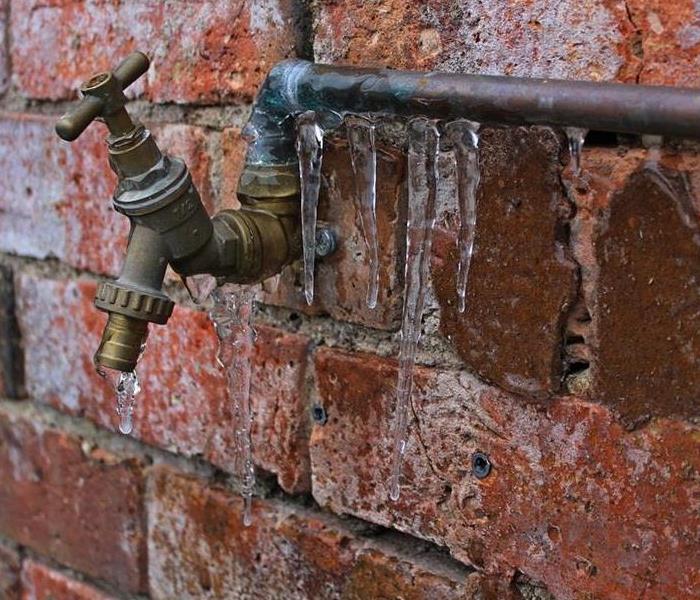 Frozen Pipe
Frozen Pipe
Freezing temperatures will soon be upon us and unfortunately frozen sprinkler pipes may be a result. Maryland weather can be very unpredictable and winter is on its way. Are you winter and snow ready?
Did you know a sprinkler pipe at a typical flow rate of 30 gallons per minute can expel as much as 500 gallons of water in 15 minutes. Imagine you are at work when a sprinkler pipe bursts in your neighbor’s unit or worse yet your own.
According to the Anne Arundel County Office of Emergency Management (OEM), the Winter outlook says that “temperatures are favored to be above average with no parts favored to be colder than average; precipitation includes wetter-than-average conditions; and drought conditions will continue to improve….” Click here to read more.
- Here are a few tips to consider for your family:
- Make a family communications plan while together for the holidays.
- Travel safely, well-rested, and during daylight hours.
- Keep space heaters on a single electrical cord and at least 3 feet away from flammable objects.
SERVPRO of Edgewater/Deale-Churchton/Lothian wishes you a safe winter.
Protect Your Property During a Power Outage
9/11/2019 (Permalink)
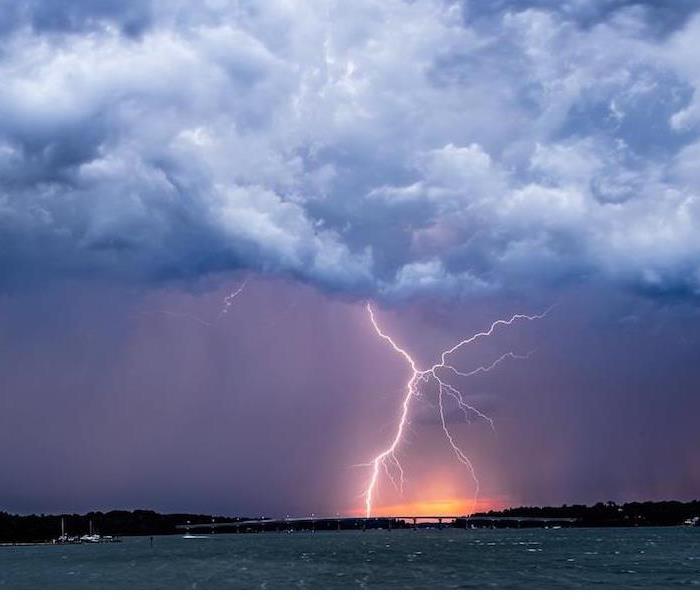 Thunderstorm
Thunderstorm
September is peak thunderstorm season. The warm air, the rolling sound of the thunder in the background and the streaks of lightning light up the night sky is like natures version of fireworks. However, with every thunderstorm, there is the probability of a power outage. Here are 4 things SERVPRO of Edgewater/Deale-Churchton/Lothian recommends in the event of a power outage:
Be Prepared. The best way to ensure business continuity is by being prepared. SERVPRO of Edgewater/Deale-Churchton/Lothian can help you develop an Emergency Readiness Plan (ERP). Subscribe to the Annapolis city CivicReady program to get emergency alerts.
Install Surge Protectors. Install a plug-in, point-of-use electrical surge protector. You plug this device into a grounded electrical outlet and plug your appliances and computers into the surge protector.
Battery Backups. If your property has a sump pump in the basement or crawl space, make sure the sump pump has a battery backup. Battery backsups are also important for network servers.
Contact Utility Company. When your office or home loses power, be sure to contact BGE, which provides power to most of Anne Arundel County, Maryland. Visit www.bge.com or call to report outages at 877-778-2222. If you see sparking power lines, immediately call 9-1-1.
Normally, a short power outage is no big deal, but the longer the power is out the potential for damage to a home or business increases.
Prepare for a Power Outage
8/22/2019 (Permalink)
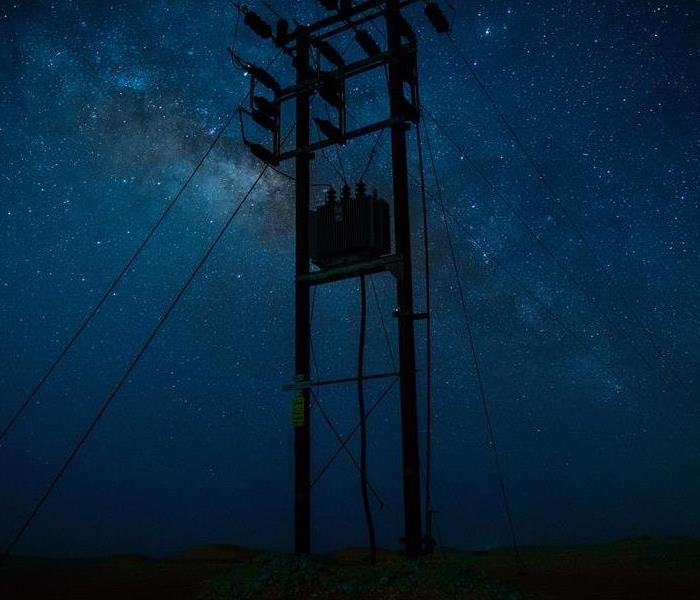 Power Lines
Power Lines
Summer thunderstorms can be exciting to watch from a safe distance. The rolling sound of the thunder in the background and the streaks of lightning light up the night sky is like natures version of July 4th fireworks. However, with every thunderstorm, there is the probability of a power outage. Here are 4 things SERVPRO of Edgewater/Deale-Churchton/Lothian recommends in the event of a power outage:
Install Surge Protectors. Install a plug-in, point-of-use electrical surge protector. You plug this device into a grounded electrical outlet and plug your appliances and computers into the surge protector. Click here for more information on surge protection.
Be Prepared. The best way to ensure business continuity is by being prepared. SERVPRO of Edgewater/Deale-Churchton/Lothian can help you develop an Emergency Readiness Plan (ERP). An ERP is a disaster plan to help your business be ready for whatever happens.
Battery Backups. If your property has a sump pump in the basement or crawl space, make sure the sump pump has a battery backup. Battery backsups are also important for network servers.
Contact Utility Company. When your office or home loses power, be sure to contact BGE, which provides power to most of Anne Arundel County, Maryland. Visit www.bge.com or call to report outages at 877-778-2222. If you see sparking power lines, immediately call 9-1-1.
Normally, a short power outage is no big deal, but the longer the power is out the potential for damage to a home or business increases.
Storm Breaks Heatwave
7/23/2019 (Permalink)
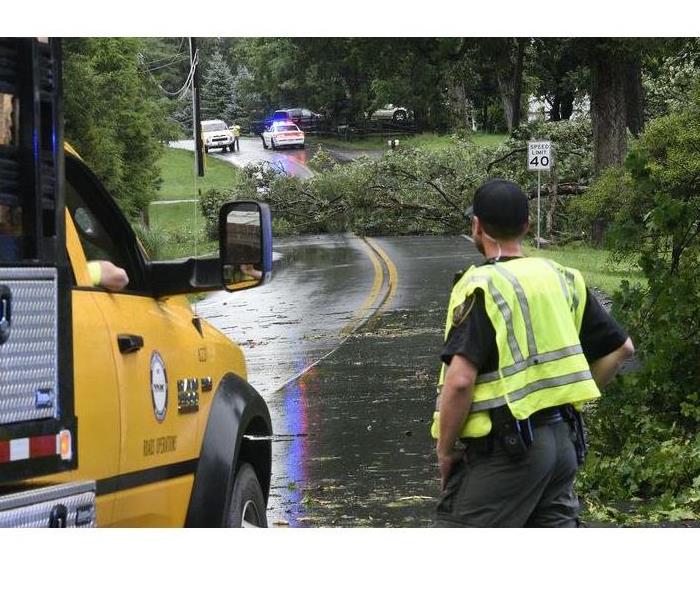 Tree Fell in Road
Tree Fell in Road
Maryland has recently experienced a serious heatwave. The storms on July 22, 2019, brought a much-needed break to the heat, but it also brought flash floods and water damage to many properties in Anne Arundel County. SERVPRO® of Edgewater/Deale-Churchton/Lothion was called to address water damage in several Edgewater properties.
According to WTOP, Anne Arundel County saw flash floods, power outages, and tornado warnings in neighboring Montgomery County. The National Weather Service confirmed a tornado that killed a man when a tree fell on him in his driveway.
Consider the following warning systems when preparing for an approaching storm:
After the thunderstorms came through the Edgewater area on Monday, SERVPRO® of Edgewater/Deale-Churchton/Lothion was called to address water damage in several properties. Stay storm safe by getting communication early!
Risks of Lightning
6/11/2019 (Permalink)
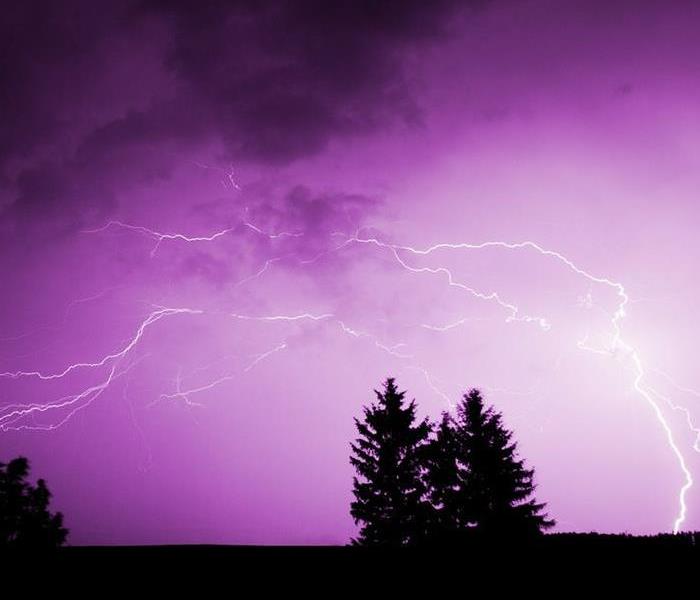 Thunderstorm
Thunderstorm
A lightning bolt is the width of a thumb and hotter than the sun. The temperature of lightning reaches five times hotter than the surface of the sun.
SERVPRO® of Edgewater/ Deale/ Churchton/ Lothian wants you to be safe this Summer when you’re outside in a Summer storm. Although most lightning occurs in the Summer, people can be struck any time of the year. Even though there may be a small chance of you or a loved one getting struck by lightning, it is important to know the factors of being struck.
Remember these tips:
- Be aware. Check the forecast before participating in outdoor activities.
- Go indoors. Remember the phrase, “When thunder roars, go indoors.” Find a safe, enclosed shelter when you hear thunder. Safe shelters include homes, offices, shopping centers, and hard-top vehicles with the windows rolled up.
- Avoid Windows, doors, porches, and concrete. Do not lie on concrete floors and avoid leaning on concrete walls. Lightning can travel through any metal wires or bars in concrete walls or flooring.
- Avoid Water. Do not bathe, shower, wash dishes, or have any other contact with water during a thunderstorm because lightning can travel through a building’s plumbing.
National Weather Service (NWS) advises you to follow these steps if a loved one is struck:
- Call for help. Call 9-1-1.
- Give first aid. Begin CPR if you are trained.
- Use an Automatic External Defibrillator if one is available. These units are lifesavers!
- If possible, move the victim to a safer place. Lightning can strike twice and you don’t want to put yourself or the victim at risk.
For the latest storm forecasts, click here to visit the NWS website. SERVPRO® of Edgewater/ Deale/ Churchton/ Lothian wishes you a safe Summer.
Winter Weather and Your Pets
1/9/2019 (Permalink)
 Protect Your Pets From Winter Weather
Protect Your Pets From Winter Weather
It’s no surprise that Marylanders love their pets. Your furry family members need to be safe during the winter just like humans. At SERVPRO of Edgewater/Deale-Churchton/Lothian we know that your pets are an important part of your family. Most pets in Anne Arundel County are indoor animals and those animals are prone to the same winter hazards as humans. Here are a few quick tips to keep in mind for your furry friend.
Limit outdoor time on bitter cold days. Try to go out when the sun is shining. If you have a dog with fur, they can still suffer from hypothermia. Hypothermia is when your body temperature falls to an abnormally low temperature, caused from long exposure to cold weather. Dogs with long or short hair should have winter sweaters or coats to help them maintain their body temperature.
Avoid the ice. Animals can slip and fall just like you. More importantly, animals cannot recognize the danger of breaking through thin ice on frozen water. It is always better to keep your pet on a leash during the winter to help them steer clear of hazards.
Wipe their paws when you come inside. The streets and sidewalks of you neighborhood are often treated with salt or other de-icers. These substances can irritate your animal's paws. Some can be toxic, which is especially dangerous if your pet licks its paws.
People and pets want a safe place inside for the cold months. If a winter emergency, like a burst pipe, makes your home unsafe, contact SERVPRO of Edgewater/Deale-Churchton/Lothian. We are here to help the residents of Anne Arundel County recover when winter storms hit.
Are You Winter Weather Ready?
12/12/2018 (Permalink)
 Winter Weather
Winter Weather
Are you prepared for the cold Maryland weather? Cold weather can have a huge impact on your Edgewater home or business if you’re not ready for it. From freezing rain and low temperatures, to damaging winds, sleet or snow, can all cause serious and costly property damage. While you cannot control the weather, you can take steps to prepare your Davidsonville home or business.
To help prevent costly winter storm damages, consider taking the following precautions to protect your property before winter weather hits.
Check your Edgewater business property for downed tree limbs and branches. Wind, heavy rain, ice and snow can cause branches to fall, which could cause damage to your property and potentially cause personal injuries.
Inspect your roof, pipes, and gutters, downspouts should be directed away from your building. Clear gutters of debris that may have gathered during the fall. Winter starts December 21, 2018 and leaves can cause a damming effect, which can lead to roof damage.
Inspect all handrails, stairwells and entryways to address and correct potentially slippery or hazardous areas. Install mats or non-slip surfaces and post caution signs where water or ice could be present.
When winter weather strikes, call SERVPRO of Edgewater / Deale-Churchton / Lothian to strike back.
Storm Preparedness Important County Numbers
9/14/2018 (Permalink)
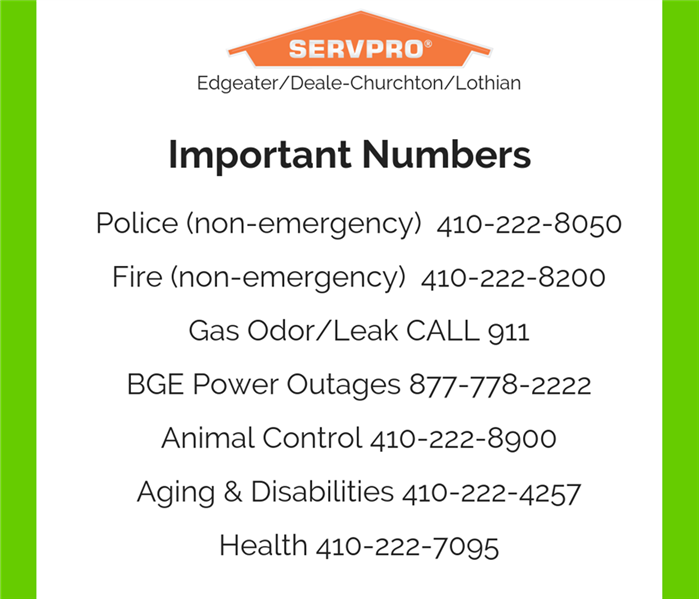 Important County Numbers
Important County Numbers
In the event of a storm, it’s important for our community to know how to get help they need. Anne Arundel County has many resources available and our citizens. We encourage you to sign up for the CodeRED systems and print this list of Important Numbers you should have in the event of a storm.
Did you know that Anne Arundel County and the City of Annapolis utilize and emergency notification system called CodeRED? The CodeRED system contacts citizens and businesses quickly in the event of an emergency. To sign up for CodeRED, visit: www.aacounty.org/OEM or call (410) 222-0600.
As SERVPRO Edgewater/Deale-Churchton/Lothian takes the month of September to engage with National Preparedness Month, we feel it’s important to provide our customers with important phone numbers they can use.
Are you Prepared for a Flash Flood?
8/21/2018 (Permalink)
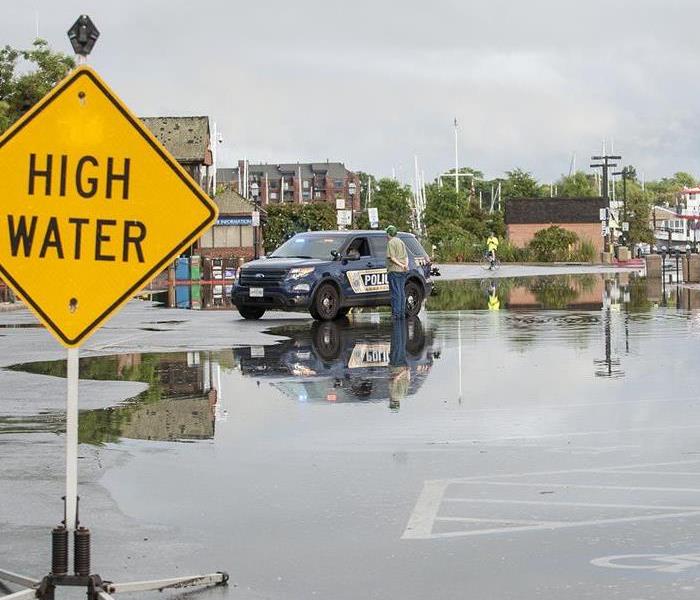 Flash Flood Annapolis
Flash Flood Annapolis
While Summer is an exciting time of year, Summer storms can create flood conditions faster than you may realize. Knowing the difference between a flood warning and flood watch is important. A Flash Flood Watch means there is possible flooding in Anne Arundel County. A Flash Flood Warning means flooding is already occurring or will occur soon in the county.
Preparing Your Family for a Flood
Your family will be better prepared to withstand a flood if you have the following items available, packed and ready to go in case you need to evacuate your home.
3 day supply of water, 1 gallon per person per day 3 day supply of non-perishable food items Flashlights, extra batteries and multi-purpose tools A first aid kit and a extra medications “ Sanitation and person hygiene items Extra pet supplies, food, ID and vet records. Extra clothing, blankets, sturdy shoes and rain gear Sunscreen and bug repellent - Emergency contact information and copies of important person documents. A camera to take photos of flood damage. Extra charges for electronic devices.
Annapolis Red Cross Emergency Number - (410) 952-8940
Baltimore Gas and Electric – 1-800-685-0123
SERVPRO Edgewater/Deale-Churchton/Lothian – (410) 867-3590
Storm Damage Cleanup and Restoration: What to do after a Flood or Water Damage
Floods and water damage often occur with little warning and can be devastating to homes, business and entire communities. Taking immediate action after a disaster is vital. Communicating with your insurance company and calling upon the emergency response restoration experts at SERVPRO Edgewater/Deale-Churchton/Lothian will help you move forward faster. Taking pictures, collecting items, extracting water and starting the dry-out process can be helpful, but safety must come first. If your home or business is not sturdy, do not go in. Leave that to us!
What to Do After a Flood or Water Damage
- Remove excess water by mopping and blotting.
- Wipe excess water from wood furniture after removal of lamps and tabletop items.
- Remove and prop wet upholstery and cushions.
- Place aluminum foil or wood blocks between furniture legs and wet carpeting.
- Turn air conditioning on for maximum drying in summer.
- Remove colored rugs from wet carpeting.
- Remove art objects to a safe, dry place.
- Gather loose items from floors.
What NOT to Do After a Flood or Water Damage
- Don't leave wet fabrics in place. Hang furs and leather goods.
- Don't leave books, magazines or other colored items on wet carpet or floors.
- Don't use your household vacuum to remove water.
- Don't use television or other household appliances.
- Don't turn on ceiling fixtures if ceiling is wet, and keep out of rooms where ceilings are sagging.
5 Tips on Preventing Storm Damage
7/23/2018 (Permalink)
5 Tips on Preventing Storm Damage
Summer thunderstorms can wreak havoc on Maryland. Almost every other day we hear about how weather is affecting people around the country. The good news is you can prepare for severe weather and help prevent storm damage.
Here are some quick tips from SERVPRO of Edgewater/Deale-Churchton/Lothian.
- Remove dead branches from trees and remove dead trees. Dead trees and tree branches can fall on cars, damage your roof, or cause major destruction. Be sure to remove all dead wood.
- Dirty or cluttered gutters are a common cause of drainage problem. However, make sure you fix drainage problems with patios and landscaping too. Do you see any puddles in your yard? This can be a sign of drainage problems. To avoid water damage, get those drainage problems addressed before a storm.
- When was the last time you had your roof inspected? Ideally, your roof should be inspected and maintained on a yearly basis.
- Sump Pump. Ensure you have a sump pump battery backup in place. These batteries can save you from having a real mess on your hands. A batterybackup system is needed most often when heavy rains have resulted in a power outage, or the primary sump pump is overwhelmed by heavy water volumes during a rain event.
- Shut Off. Know where your shut off valves are for your utilities. If you have a flood, for your safety, it is important to know where the shut off valves are locating both inside/outside your home.
If you have concerns with a commercial property having an emergency plan, please let us know. SERVPRO of Edgewater/Deale-Churchton/Lothian can develop an Emergency Ready Profile (ERP) for your building and provide your facilities staff with a telephone application that will keep them prepared for severe weather. Call us for more information (410) 867-3590.
May 2018 Record Breaking Rainfall in Anne Arundel County Maryland
6/4/2018 (Permalink)
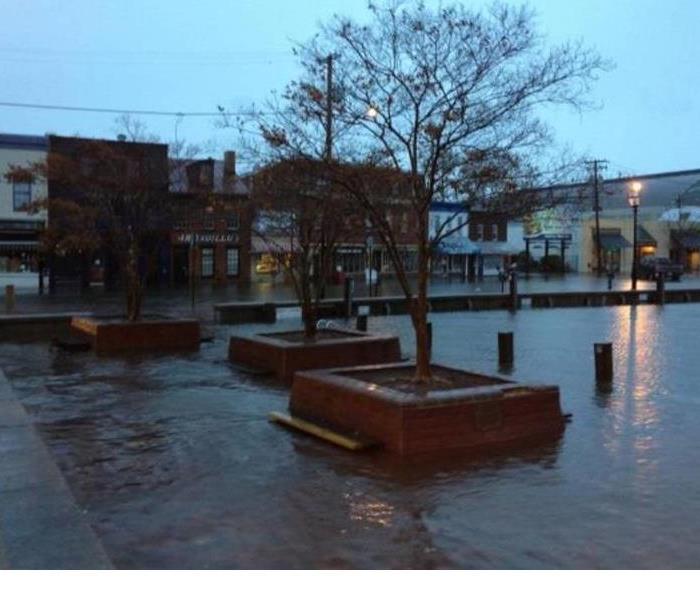 Rain in Annapolis
Rain in Annapolis
Wow! Have we seen rain or what?! During the first 3 weeks of May, Anne Arundel County, Maryland has seen record-breaking rainfall.
SERVPRO of Edgewater/Deale-Churchton and Lothian was inundated with requests to assist with flooded basements, leaks in roofs from fallen trees and more. Our crews worked around the clock and provided outstanding service to residents and business owners in Anne Arundel County.
When you suffer a water emergency, we will do our best to get to you as soon as possible. However, there are a few things you can do to make sure you are safe and to prevent additional damage. Here’s a list of questions you can ask:
- Is it safe for you to stay in your house?
- Are there any electrical risks? Is the water near an outlet?
- Is it possible someone can fall in the water?
- Can you move materials to dry areas?
Safety is our top priority. Always make sure you and your home are safe first. Wet items can be dried or replaced.
SERVPRO of Edgewater/Deale-Churchton and Lothian is strategically located to provide rapid response to water emergencies. We are water removal and cleanup specialists and are ready to service your home when flooding or water leaks cause water damage. We quickly dry your property using state-of-the-art water removal equipment and advanced drying techniques, documenting the drying process to make sure your property is dry and the job is done right.
If you have concerns with water damage, call us (410) 867-3590.
Planes, Trains and Automobiles all around Edgewater
12/21/2017 (Permalink)
 Train schedules could be impacted by stormy weather in parts of the county this holiday season.
Train schedules could be impacted by stormy weather in parts of the county this holiday season.
Planes, Trains and Automobiles are out in full force the last few weeks of the year. Getting people to shops, parties and family destinations. The streets of Edgewater are bustling with friends from near and far and those finishing their holiday to do list. It looks like the area is in good shape until possibly Christmas Day when the region could get a rain or snow storm.
If you are expecting to travel by plane, train or automobile it is good practice to check the weather before you leave so you can be prepared for any hazards the weather may bring. AAA says more people will be hitting the road in personal vehicles this season. We suggest packing extra blankets, water bottles, a small shovel and cat litter which can all come in helpful if there is snow in the area that effects travel.
We wish everyone a Happy Holidays and Safe New Years as you travel near and far!
Icicles are pretty but can mean water damage to Shady Side Homes
12/11/2017 (Permalink)
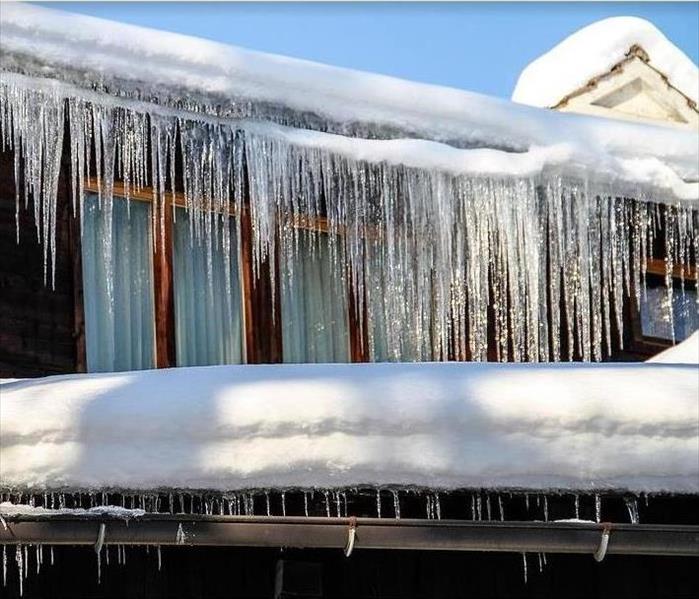 Beautiful roof line of icicles can be a sign of underlying water in your Deale's attic. Be sure to check attic space for wet spots.
Beautiful roof line of icicles can be a sign of underlying water in your Deale's attic. Be sure to check attic space for wet spots.
Icicles look so pretty!!Shady Side and Deale residents should be weary of those pretty winter creations. They can be a sign that your roof has an ice dam. Ice Dams occur when a snow-covered roof has some melting that seeps under the snow drift and then refreezes at the edge of the roof line. Once frozen any further water that is melting has nowhere to go other than under shingles or into holes in a roof line.
If you see icicles on the roof line you should check your attic for any possible wet spots which would indicate a problem. Catching these early is key to avoiding a larger water damage in your Deale or Shady Side home.
SERVPRO of Edgewater/Deale-Churchton/Lothian has a team of technicians that can assist should your water damage become more than you can handle.
Fast, Professional Restoration for Storm Damage to your Edgewater Home
11/7/2017 (Permalink)
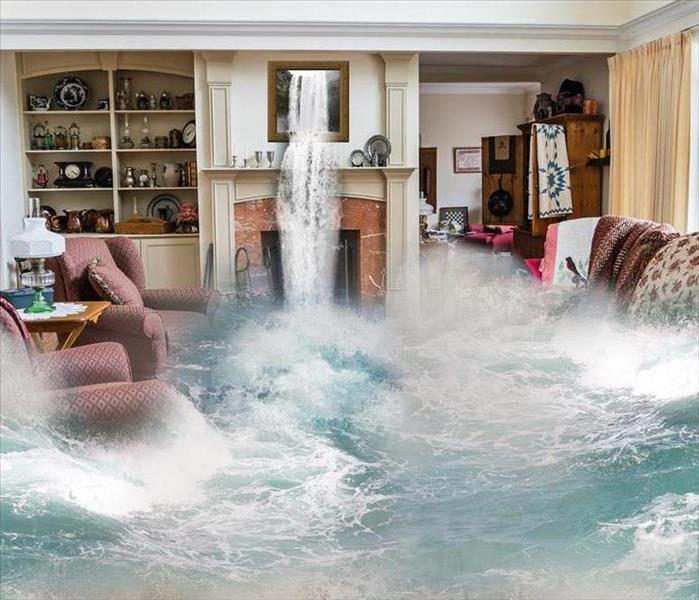 We can restore your home and contents, "Like it never even happened."
We can restore your home and contents, "Like it never even happened."
Rain, Snow and Wind are a bad combination for Maryland residents. Winter Storm season is approaching our area and the predictions are for more precipitation than last year. Temperatures are expected to be lower than normal which can lead to frozen and busted pipes. All these predictions mean is that it is time to get prepared!
Shovels, Generators, Clean Gutters, Roof Patches and saving SERVPRO of Edgewater/Deale-Churchton/Lothian's number (410.867-3590) to your cell are the most important steps. It is unrealistic to think storm damage cannot affect you. If it does you need to act fast for a better chance of restoring your home and possessions. Our IICRC-Certified technicians come equipped to extract water and assess the damage to the structure. We understand that getting your home dry and your belongings restored is your number one priority. We are here to help!
Revised Tropical Storm and Hurricane Forecast will effect Anne Arundel County
8/10/2017 (Permalink)
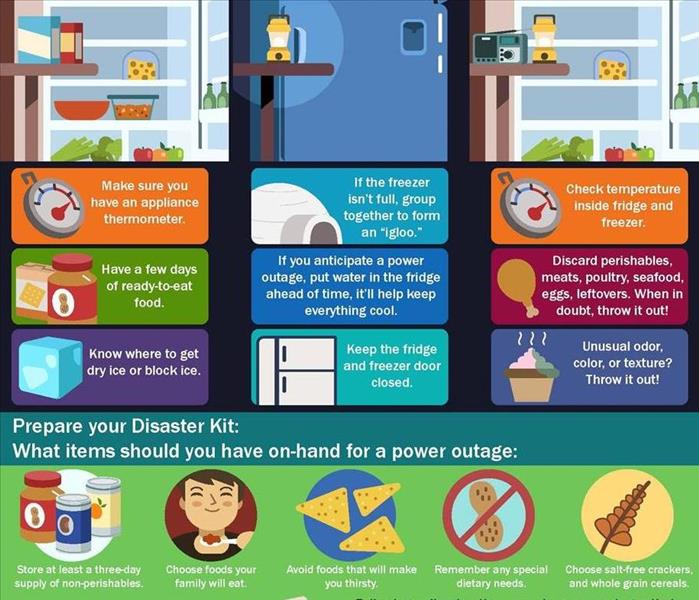 Shady Side, is your disaster kit ready?
Shady Side, is your disaster kit ready?
Forecasters have recently increased their forecast of named storms and major hurricanes. Predictions from May of 2017 were much lower, but due to current conditions in the Atlantic we are in for an “extremely active season”. What does that mean for residents of Arnold, Severna Park and Annapolis?
Peak season is Mid-August through late October. Preparation starts NOW!
- Download a weather or local emergency operations app that will send alerts to your cell phone when there are weather alerts for your location.
- Pack a Disaster Kit -details here.
- Know your plan for the family if you need to evacuate, power goes out or what to do if your home is effected by storm damage
- Prepare your home
- Tree limbs cut back
- Secure loose rain gutters, clean debris and leaves from them
- Purchase, check and gas up generator
- Add SERVPRO of Edgewater/Deale-Churchton/Lothian to your cell phone 410.647.8181
Once a weather alert is issued make sure to stay tuned to radio for local announcements for updates and instructions. Safety is the most important thing during storm cleanup. Avoid down power lines, standing water and debris fields. Calling SERVPRO to help after a storm, and letting our trained professionals help is what we are here for.
For more information about the forecast and preparedness visit the National Hurricane Center.
For assistance with storm damage, flooding, mold or fire restoration call 410.647.8181 for the fastest response.
Hurricane Preparedness - Be Ready
8/17/2016 (Permalink)
With Hurricane season approaching, there are two keys to weather safety that everyone should know. That is to PREPARE for the risks and to ACT on those preparations when alerted by emergency officials.
Before a Hurricane:
To begin preparing, you should build an emergency kit and make a family communications plan.Know your surroundingsLearn the elevation level of your property and whether the land is flood-prone.Identify levees and dams in your area and determine whether they pose a hazard to you.Learn community hurricane evacuation routes and how to find higher ground.Make plans to secure your propertyCover all of your home's windowsInstall straps or additional clips to securely fasten your roof to the frame structure.Be sure trees and shrubs around your home are well trimmed so they are more wind resistant.Clear loose and clogged rain gutters and downspouts.Reinforce your garagePlan to bring in all outdoor furniture, decorations, garbage cans and anything else that is not tied down.Determine how and where to secure your boat.Install a generator for emergencies.If in a high-rise building, when high winds are present, be prepared to take shelter on a lower floor because wind conditions increase with height, and in a small interior room without windows.Consider building a safe room. Call SERVPRO of Edgewater/Deal-Churchton/Lothian – 410-867-3590
When Storms or Floods hit Southern Anne Arundel County SERVPRO is ready!
7/26/2016 (Permalink)
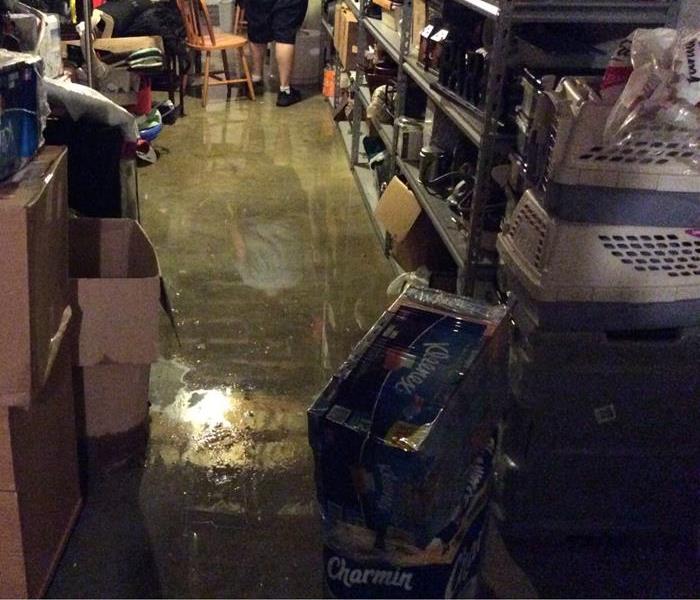 Our highly trained crews are ready to respond 24/7 to storm or flood damage in the Southern Anne Arundel County area.
Our highly trained crews are ready to respond 24/7 to storm or flood damage in the Southern Anne Arundel County area.
SERVPRO of Edgewater/Deale-Churchton/Lothian specializes in storm and flood damage restoration. Our crews are highly trained and we use specialized equipment to restore your property to its pre-storm condition.
Faster Response
Since we are locally owned and operated, we are able to respond quicker with the right resources, which is extremely important. A fast response lessens the damage, limits further damage, and reduces the restoration cost.
Resources to Handle Floods and Storms
When storms hits South County, we can scale our resources to handle a large storm or flooding disaster. We can access equipment and personnel from a network of 1,650 Franchises across the country and elite Disaster Recovery Teams that are strategically located throughout the United States.
Have Storm or Flood Damage? Call Us Today SERVPRO of Edgewater/Deal-Churchton/Lothian – 410-867-3590
South County Residents: We Specialize in Flooded Basement Cleanup and Restoration!
6/24/2016 (Permalink)
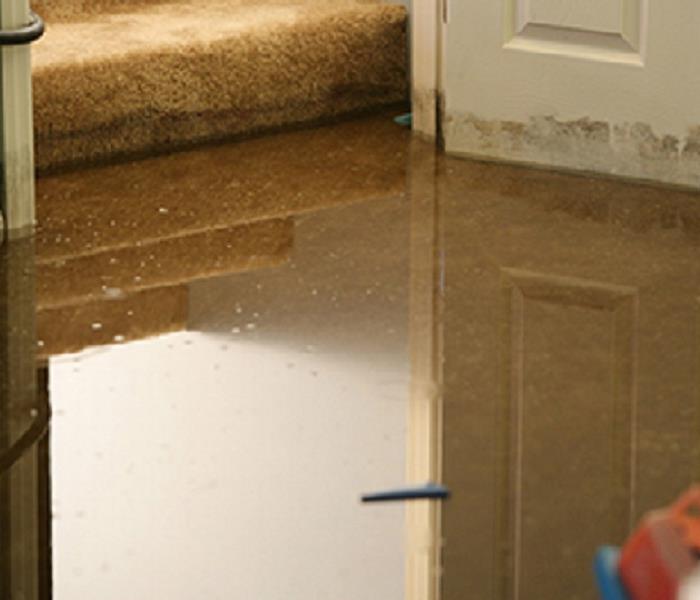 This South County home’s basement flooded due to heavy rains.
This South County home’s basement flooded due to heavy rains.
A basement can flood at any time, although flooding most often occurs during heavy rainfall. Basements are inherently prone to flooding because they are the lowest level of a building and are normally built partly or entirely below ground level. There are a number of reasons why your Soth County basement could flood, including:
· A blocked or failed sewer lateral pipe
· Heavy rain causes surface water to pool around your home
· Storm sewer backup
· Sanitary sewer backup
· Foundation drainage failure
· Water supply-line break or hot-water tank failure
· And many more
Have Questions about Basement Flooding?
Call Today – 410-867-3590
If flood water is not handled quickly and properly, it can jeopardize your health and safety, and cause severe damage to your home’s structure. Remember, the longer you wait, the worse the problem will get.
The bottom line: a flooded basement can jeopardize your health, safety, and your home’s integrity. It’s worth making a call to SERVPRO of Edgewater/Deale-Churchton/Lothian and let our trained, professional crews handle the situation safely and correctly. We have earned the trust of hundreds of homeowners, business owners, and property professionals.
We are Flooded Basement Specialists:
· We are Available 24 hours/7 days per week
· We’re a Preferred Vendor to many National Insurance Companies
· We Bill The Insurance Directly – One Less Thing For You To Worry About
· Our Technicians are Highly-Trained in Water Restoration Techniques
· We use s500 IICRC Restoration Standards
· Advanced Inspection and Extraction Equipment
Basement Flooded? Call Us Today – We’re Ready To Help 410-864-3590
Take Action after a Natural Disaster
3/17/2016 (Permalink)
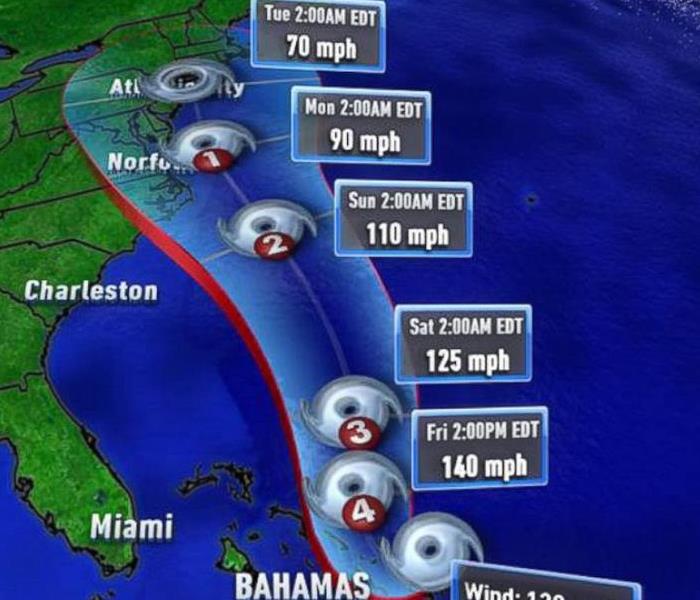 Image credit ABC News
Image credit ABC News
If your property has been damaged in a natural disaster—hurricane, tornado, flood, earthquake or fire—there are some important steps you can take in the immediate aftermath to ensure your safety and minimize financial loss. Consider the following actions:
Enter with caution. Damaged homes or buildings could be structurally unsafe; use extreme caution when navigating those areas, and don’t enter unless absolutely necessary. Debris and other hazards are unsafe.
Secure the property. In cases of significant structural damage or security concerns, determine whether the damaged area needs to be secured with temporary fencing or another type of barrier to keep out unwanted guests.
Notify your insurer. Call your insurance company to inform them there’s been a disaster and to file an official claim. Take down the claim number and any relevant contact information for whomever will handle your claim. If your vehicle sustained damage, contact your automobile insurer.
Notify utility companies. If property damage includes disruption to water, gas or electric utilities, contact the companies right away to shut off service. Failing to do so could pose a safety risk to you or emergency responders in and around the disaster area.
Take photos of the damage. Beginning with the property’s exterior, take photographs of the damage. If it’s safe to enter the structure, take photographs of interior damage as well. These will come in handy for insurance purposes.
Take inventory of your damaged belongings. Make a list of your damaged personal items and ensure you have photographs. Include the price of large appliances or valuable items with your list and, if possible, surviving receipts.
Do You Have Flood or Storm Damage? Fire Damage? Call Us Today (410) 867-3590
Storm Damage Cleanup and Restoration
2/24/2016 (Permalink)
Storm and flood damage require specialized restoration techniques and equipment. When a storm hits your home, you need the company with storm damage experience and expertise. SERVPRO of Edgewater/Deale-Churchton/Lothian can respond immediately to storm and flooding conditions.
SERVPRO is faster to any disaster. We’re dedicated to responding immediately to water and storm damage emergencies. A fast response lessens the damage, limits further damage, and reduces cost. As leaders in the storm and water damage industry, we have advanced training and expertise, not to mention a tremendous amount of hands-on experience. We use this training and experience to quickly dry your home and restore it back to pre-storm condition.
What you can do until help arrives:
After any water damage situation, your primary focus should be safety first:
- Is it safe to stay in the house?
- Electrical and "slip and fall" hazards are some of the most prevalent concerns.
- Only do activities that are safe for you to perform.
- Wet materials can be VERY heavy. Be careful!
What To Do After Flooding
- Remove excess water by mopping and blotting.
- Wipe excess water from wood furniture after removal of lamps and tabletop items.
- Remove and prop wet upholstery and cushions.
- Place aluminum foil or wood blocks between furniture legs and wet carpeting.
- Turn air conditioning on for maximum drying in summer.
- Remove colored rugs from wet carpeting.
- Remove art objects to a safe, dry place.
- Gather loose items from floors.
What NOT To Do After Flooding
- Don't leave wet fabrics in place. Hang furs and leather goods.
- Don't leave books, magazines or other colored items on wet carpet or floors.
- Don't use your household vacuum to remove water.
- Don't use television or other household appliances.
- Don't turn on ceiling fixtures if ceiling is wet, and keep out of rooms where ceilings are sagging.
Do you have a water emergency? Call us today at 410-867-3590
Do you have water damage from the storm?
2/11/2016 (Permalink)
When you are dealing with water damage, immediate action is crucial. SERVPRO of Edgewater/Deale-Churchton/Lothian Professionals respond immediately and use advanced equipment and techniques to remove the water quickly. They closely monitor and document the drying process to verify your property is dried properly and thoroughly.
Check out the tips below on what to do until help arrives.
What you can do until help arrives
After any water damage situation, your primary focus should be safety:
Is it safe to stay in the house?Electrical and "slip and fall" hazards are some of the most prevalent concerns.Only do activities that are safe for you to perform.Wet materials can be VERY heavy. Be careful!Have A Water Damage Emergency?
Call 410-867-3590
What to Do After Flooding
Remove excess water by mopping and blotting.Wipe excess water from wood furniture after removal of lamps and tabletop items.Remove and prop wet upholstery and cushions.Place aluminum foil or wood blocks between furniture legs and wet carpeting.Remove colored rugs from wet carpeting.Remove art objects to a safe, dry place.Gather loose items from floors.
What NOT To Do After Flooding
Don't leave wet fabrics in place. Hang furs and leather goods.Don't leave books, magazines or other colored items on wet carpet or floors.Don't use your household vacuum to remove water.Don't use television or other household appliances.Don't turn on ceiling fixtures if ceiling is wet, and keep out of rooms where ceilings are sagging.
Before Winter Storms
1/14/2016 (Permalink)
Winter Storms & Extreme Cold
While the danger from winter weather varies across the country, nearly all Americans, regardless of where they live, are likely to face some type of severe winter weather at some point in their lives. Winter storms can range from a moderate snow over a few hours to a blizzard with blinding, wind-driven snow that lasts for several days. Many winter storms are accompanied by dangerously low temperatures and sometimes by strong winds, icing, sleet and freezing rain.
One of the primary concerns is the winter weather's ability to knock out heat, power and communications services to your home or office, sometimes for days at a time. Heavy snowfall and extreme cold can immobilize an entire region.
The National Weather Service refers to winter storms as the “Deceptive Killers” because most deaths are indirectly related to the storm. Instead, people die in traffic accidents on icy roads and of hypothermia from prolonged exposure to cold. It is important to be prepared for winter weather before it strikes.
To prepare for a winter storm you should do the following:
- Before winter approaches, add the following supplies to your emergency kit:
- Rock salt or more environmentally safe products to melt ice on walkways. Visit the Environmental Protection Agency for a complete list of recommended products.
- Sand to improve traction.
- Snow shovels and other snow removal equipment.
- Sufficient heating fuel. You may become isolated in your home and regular fuel sources may be cut off. Store a good supply of dry, seasoned wood for your fireplace or wood-burning stove.
- Adequate clothing and blankets to keep you warm.
- Make a Family Communications Plan. Your family may not be together when disaster strikes, so it is important to know how you will contact one another, how you will get back together and what you will do in case of an emergency.
- A NOAA Weather Radio broadcasts alerts and warnings directly from the NWS for all hazards. You may also sign up in advance to receive notifications from your local emergency services.
- Download FEMA’s Be Smart. Know Your Alerts and Warnings for a summary of notifications at:www.ready.gov/prepare. Free smart phone apps, such as those available from FEMA and the American Red Cross, provide information about finding shelters, providing first aid, and seeking assistance for recovery.
- Minimize travel. If travel is necessary, keep a disaster supplies kit in your vehicle.
- Bring pets/companion animals inside during winter weather. Move other animals or livestock to sheltered areas with non-frozen drinking water.
Winterize Your Vehicle
Check or have a mechanic check the following items on your car:
- Antifreeze levels - ensure they are sufficient to avoid freezing.
- Battery and ignition system - should be in top condition and battery terminals should be clean.
- Brakes - check for wear and fluid levels.
- Exhaust system - check for leaks and crimped pipes and repair or replace as necessary. Carbon monoxide is deadly and usually gives no warning.
- Fuel and air filters - replace and keep water out of the system by using additives and maintaining a full tank of gas. A full tank will keep the fuel line from freezing.
- Heater and defroster - ensure they work properly.
- Lights and flashing hazard lights - check for serviceability.
- Oil - check for level and weight. Heavier oils congeal more at low temperatures and do not lubricate as well.
- Thermostat - ensure it works properly.
- Windshield wiper equipment - repair any problems and maintain proper washer fluid level.
- Install good winter tires - Make sure the tires have adequate tread. All-weather radials are usually adequate for most winter conditions. However, some jurisdictions require that to drive on their roads, vehicles must be equipped with chains or snow tires with studs.
Update the emergency kits in your vehicles with:
- A shovel
- Windshield scraper and small broom
- Flashlight
- Battery powered radio
- Extra batteries
- Water
- Snack food
- Matches
- Extra hats, socks and mittens
- First aid kit with pocket knife
- Necessary medications
- Blanket(s)
- Tow chain or rope
- Road salt and sand
- Booster cables
- Emergency flares
- Fluorescent distress flag
Winterize Your Home
- Winterize your home to extend the life of your fuel supply by insulating walls and attics, caulking and weather-stripping doors and windows, and installing storm windows or covering windows with plastic.
- Winterize your house, barn, shed or any other structure that may provide shelter for your family, neighbors, livestock or equipment. Clear rain gutters; repair roof leaks and cut away tree branches that could fall on a house or other structure during a storm.
- Maintain heating equipment and chimneys by having them cleaned and inspected every year.
- Insulate pipes with insulation or newspapers and plastic and allow faucets to drip a little during cold weather to avoid freezing. Running water, even at a trickle, helps prevent pipes from freezing.
- All fuel-burning equipment should be vented to the outside and kept clear.
- Keep fire extinguishers on hand, and make sure everyone in your house knows how to use them. House fires pose an additional risk, as more people turn to alternate heating sources without taking the necessary safety precautions.
- Learn how to shut off water valves (in case a pipe bursts).
- Insulate your home by installing storm windows or covering windows with plastic from the inside to keep cold air out.
- Hire a contractor to check the structural ability of the roof to sustain unusually heavy weight from the accumulation of snow - or water, if drains on flat roofs do not work.
Know the Terms
Know the terms used to describe changing winter weather conditions and what actions to take. These terms can be used to determine the timeline and severity of an approaching storm. (Advisory / Watch / Warning). The NWS also issues advisories and warnings for other winter weather, including blizzards, freezes, wind chill, lake effect snow, and dense fog. Be alert to weather reports and tune in for specific guidance when these conditions develop.
Freezing Rain - Rain that freezes when it hits the ground, creating a coating of ice on roads, walkways, trees and power lines.
Sleet - Rain that turns to ice pellets before reaching the ground. Sleet also causes moisture on roads to freeze and become slippery.
Wind Chill- Windchill is the temperature it “feels like” when you are outside. The NWS provides a Windchill Chart to show the difference between air temperature and the perceived temperature and the amount of time until frostbite occurs. For more information, visit: www.nws.noaa.gov/om/windchill.
Winter Weather Advisory - Winter weather conditions are expected to cause significant inconveniences and may be hazardous. When caution is used, these situations should not be life threatening. The NWS issues a winter weather advisory when conditions are expected to cause significant inconveniences that may be hazardous. If caution is used, these situations should not be life-threatening.
Winter Storm Watch - A winter storm is possible in your area. Tune in to NOAA Weather Radio, commercial radio, or television for more information. The NWS issues a winter storm watch when severe winter conditions, such as heavy snow and/or ice, may affect your area but the location and timing are still uncertain. A winter storm watch is issued 12 to 36 hours in advance of a potential severe storm. Tune in to NOAA Weather Radio, local radio, TV, or other news sources for more information. Monitor alerts, check your emergency supplies, and gather any items you may need if you lose power.
Winter Storm Warning - A winter storm is occurring or will soon occur in your area.
Blizzard Warning - Sustained winds or frequent gusts to 35 miles per hour or greater and considerable amounts of falling or blowing snow (reducing visibility to less than a quarter mile) are expected to prevail for a period of three hours or longer.
Frost/Freeze Warning - Below freezing temperatures are expected.
Carbon Monoxide
Caution: Each year, an average of 430 Americans die from unintentional carbon monoxide poisoning, and there are more than 20,000 visits to the emergency room with more than 4,000 hospitalizations. Carbon monoxide-related deaths are highest during colder months. These deaths are likely due to increased use of gas-powered furnaces and alternative heating, cooking, and power sources used inappropriately indoors during power outages.
- Never use a generator, grill, camp stove or other gasoline, propane, natural gas or charcoal¬ burning devices inside a home, garage, basement, crawlspace or any partially enclosed area. Locate unit away from doors, windows and vents that could allow carbon monoxide to come indoors. Keep these devices at least 20 feet from doors, windows, and vents.
- The primary hazards to avoid when using alternate sources for electricity, heating or cooking are carbon monoxide poisoning, electric shock and fire.
- Install carbon monoxide alarms in central locations on every level of your home and outside sleeping areas to provide early warning of accumulating carbon monoxide.
- If the carbon monoxide alarm sounds, move quickly to a fresh air location outdoors or by an open window or door.
- Call for help from the fresh air location and remain there until emergency personnel arrive to assist you.
For More Information Visit http://www.ready.gov/winter-weather
Ice Dams
1/7/2016 (Permalink)
The winter season brings snow and ice to roofs all across the East Coast and along with the snow melt, damaging ice dams. With all the warm and cold fluctuations in our weather this year, ice damming is going to be a problem for many homeowners. Serious damage from ice damming is often subtle and slow to appear. Stained ceilings and walls, peeled paint, damaged plaster are all easily recognized and repairable. But other damage is not as obvious and often goes unchecked until very expensive repairs become urgently necessary. Here is information on exactly what ice dams are, what causes them, and what you should do if they do appear on your roof or cause damage inside your home:
What Are Ice Dams?
An ice dam is a wall of ice that forms at the edge of the roof, usually at the gutters or soffit. When it forms, the water then backs up behind the ice dam and creates a pool of water. This pool of water can leak into your home and cause damage to walls, ceilings, insulation, and flooring.
What Causes Ice Dams?
Ice dams are usually caused by heavy snowfall and improper ventilation in the attic. When the roofing system isn’t working right, indoor heat can rise through the ceiling into the attic and warm the roof surface. Snow on the heated part of the roof melts and flows down until it meets the part of the roof that is below freezing. At that point, the water freezes again. This process of thawing and refreezing is what causes an ice dam.
How to Identify Ice Dams
Below freezing temperatures come with warning signs on the exterior and interior of your home. Here are some warning signs:
Exterior Signs
· Icicles are usually one of the first warning signs of possible ice dams on your roof – especially if they are large, about 2 to 3 inches or more in diameter.
· Ice buildup at the roof eaves
· A buckled drip edge
· Bowed face boards
· Bowed exterior faucets
Interior Signs
· Bubbling paint
· Buckling joint tape
· Smells/odors of moisture
· Bowing baseboards
· Dark stains on hardwood floors
· Signs of mold, mildew, and air quality
· Stained ceilings and walls
Preventing Ice Dams
If you think your home may be prone to experiencing an ice dam situation this winter, it’s a good idea to investigate the current condition of your home. Here are a few suggestions for preventing ice dams:
· Check your roof for air leaks.
· Ensure your home is well insulated. A well-ventilated attic is a cold attic, and a cold attic will not support the formation of ice dams.
· Look for signs of inadequate ventilation. If you spot rust spots, rusty nails or a mildew smell these are all signals that moisture has formed on the inside of your roof.
· Keep gutters clear of leaves and debris. A clogged gutter causes ice and snow to build up.
· Install snow and ice slides. The slick metal allows snow to slide off the roof before it can melt and spawn an ice dam.
· Don’t let snow accumulate. Consult a roofing professional to remove snow accumulation from your roof.
· Inspect your roof regularly for signs of ice dams forming.
If you experience water damage from ice dams and melting snow this winter, call SERVPRO of Edgewater/Deale-Churchton/Lothian at (410) 867-3590 to discuss your options. Our trained technicians can assess the damage caused by the ice dam and work with your insurance company to get all the problems fixed. Contact us to schedule an appointment today!






 24/7 Emergency Service
24/7 Emergency Service

















